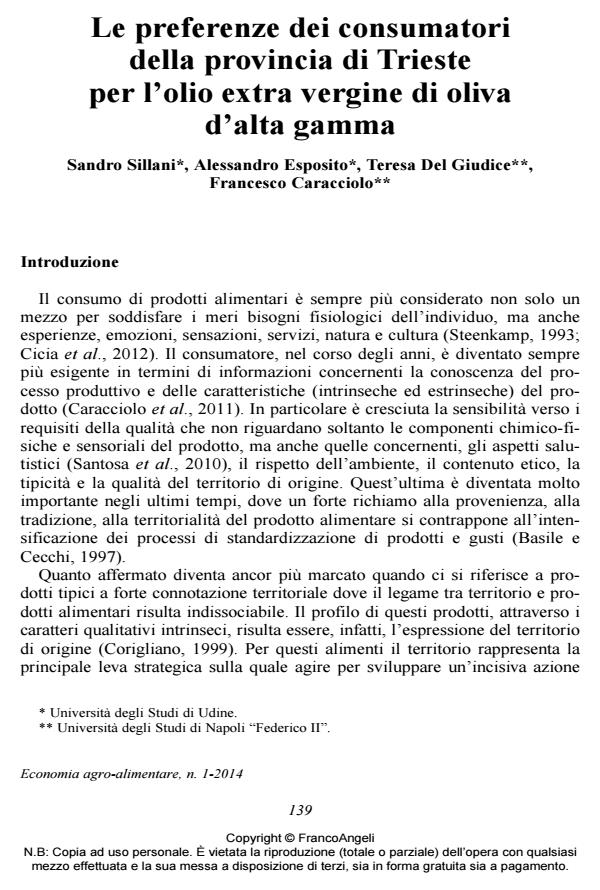Consumers preferences for extra-virgin olive oil in Trieste province
Journal title ECONOMIA AGRO-ALIMENTARE
Author/s Sandro Sillani, Alessandro Esposito, Teresa Del Giudice, Francesco Caracciolo
Publishing Year 2014 Issue 2014/1
Language Italian Pages 17 P. 139-155 File size 148 KB
DOI 10.3280/ECAG2014-001007
DOI is like a bar code for intellectual property: to have more infomation
click here
Below, you can see the article first page
If you want to buy this article in PDF format, you can do it, following the instructions to buy download credits

FrancoAngeli is member of Publishers International Linking Association, Inc (PILA), a not-for-profit association which run the CrossRef service enabling links to and from online scholarly content.
Food quality is made up of a set of both intrinsic and extrinsic characteristics, including how these characteristics are guaranteed and communicated to end consumers. As a result, purchase choices are affected not only by elements such as taste and price, but also by the level of food safety, production process characteristics, nutritional aspects, origin and organic certification. In this paper we present the results of an analysis of consumer preferences for "Tergeste" dop extra virgin olive oil produced in the province of Trieste. The conjoint analysis method was used to assess the importance attached by consumers to the different attributes of the extra virgin oil olive. A cluster analysis was carried out on the utility scores estimated in the conjoint analysis to classify consumers into homogeneous groups (or segments) for whom different attributes were more important. A proposal for consumer segmentation and the definition of "ideal product" is therefore, presented in the study. The paper concludes with some reflections and suggestions for the valorization of "Tergeste" dop in which it is shown that the characteristics of demand are such as to make the policy of high prices, related to the quality policy of the product, practicable. Finally, through analysis of identified consumer segments, the possibility for producers to implement new strategies to improve sales development are reported.
Keywords: Extra virgin olive oil, consumer preferences, conjoint analysis, geographical Indications
Jel codes: Q13, M31, D12, C19
Sandro Sillani, Alessandro Esposito, Teresa Del Giudice, Francesco Caracciolo, Le preferenze dei consumatori della provincia di Trieste per l’olio extra vergine di oliva d’alta gamma in "ECONOMIA AGRO-ALIMENTARE" 1/2014, pp 139-155, DOI: 10.3280/ECAG2014-001007